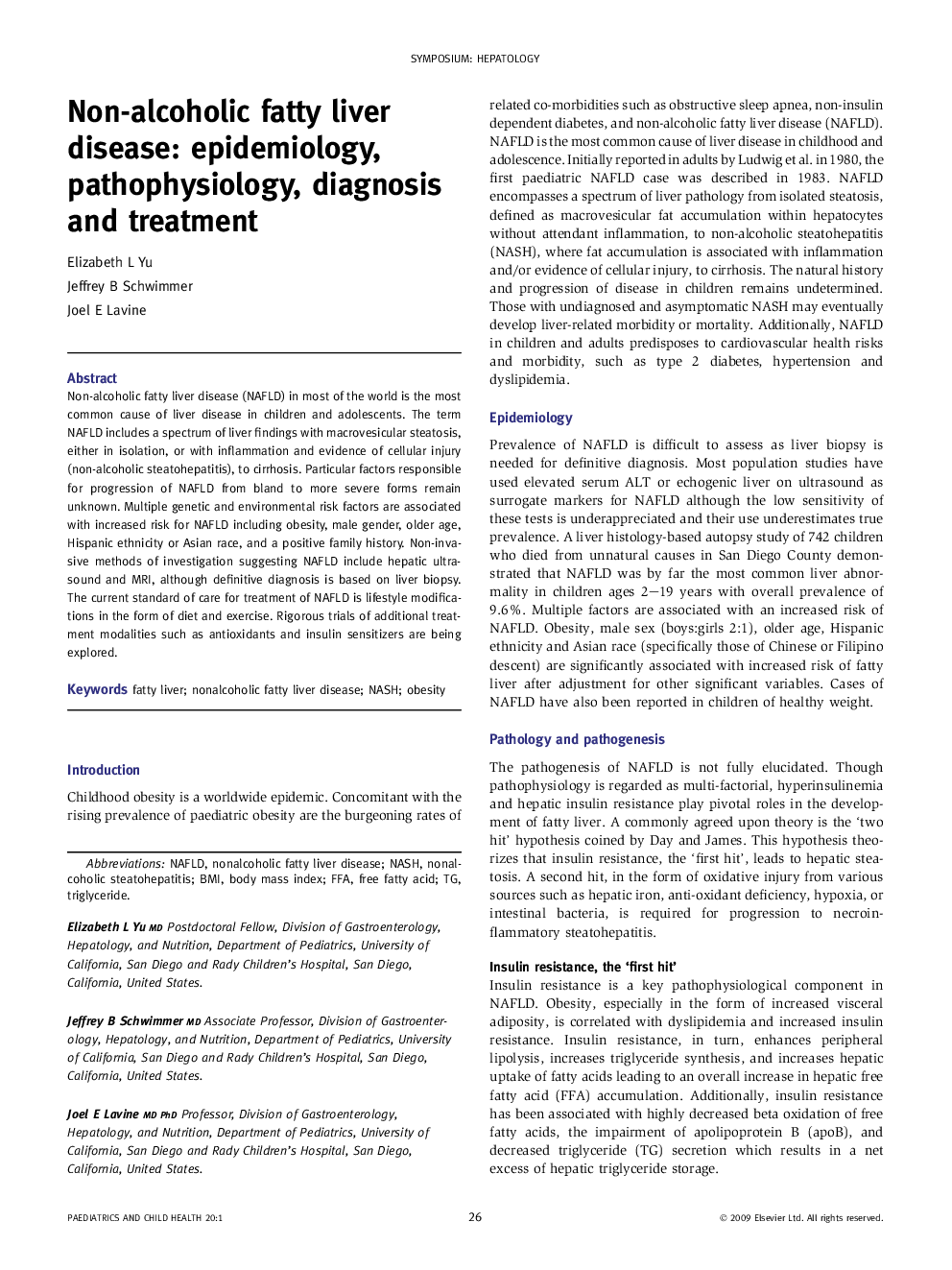| Article ID | Journal | Published Year | Pages | File Type |
|---|---|---|---|---|
| 4172875 | Paediatrics and Child Health | 2010 | 4 Pages |
Non-alcoholic fatty liver disease (NAFLD) in most of the world is the most common cause of liver disease in children and adolescents. The term NAFLD includes a spectrum of liver findings with macrovesicular steatosis, either in isolation, or with inflammation and evidence of cellular injury (non-alcoholic steatohepatitis), to cirrhosis. Particular factors responsible for progression of NAFLD from bland to more severe forms remain unknown. Multiple genetic and environmental risk factors are associated with increased risk for NAFLD including obesity, male gender, older age, Hispanic ethnicity or Asian race, and a positive family history. Non-invasive methods of investigation suggesting NAFLD include hepatic ultrasound and MRI, although definitive diagnosis is based on liver biopsy. The current standard of care for treatment of NAFLD is lifestyle modifications in the form of diet and exercise. Rigorous trials of additional treatment modalities such as antioxidants and insulin sensitizers are being explored.
